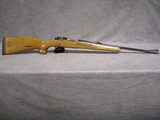 |
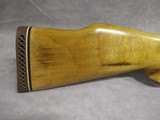 |
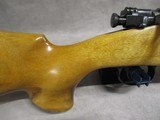 |
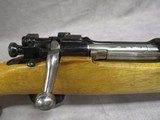 |
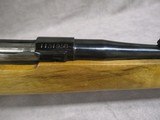 |
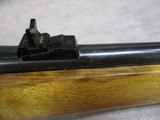 |
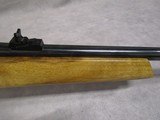 |
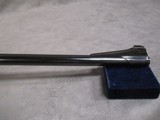 |
 |
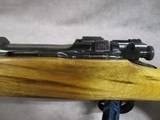 |
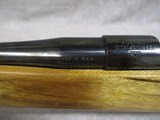 |
 |
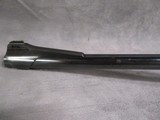 |
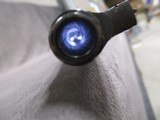 |
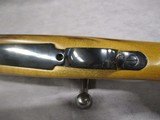 |

Springfield Model 1903 Mark 1 Custom Express Style Rifle 350 Remington Magnum
Guns International #: 102441265 Seller's Inventory #: 2309-0024
Category: Springfield Rifles - 1903 - Custom Rifles
Seller's Information
When emailing or calling sellers direct, please mention that you saw their listing on GunsInternational.com
Seller: Shooter's Supply, LLC.
Member Since: 3/16/16
First Name: Patrick
Last Name: Brown
State: Tennessee
Zip: 37343
Country: United States
Phone: (423) 875-4868
Number of Active Listings: 22
Total Number of Listings: 1372
Seller: FFL Dealer
Return Policy: 3 day inspection and return policy on used guns.
We normally ship USPS Priority Mail which should be 2-day ship. Shipping is actual cost with a minimum of $30.00 for pistols and $50.00 for rifles/shotguns to ship to most of the 48 contiguous states. Shipping to Alaska may require an extra fee. Shipping insurance is available upon request for an extra fee. We cannot do international sales. As of November 2019, we no longer ship guns to California and Hawaii.
Payment Types Accepted: Visa, Master Card, American Express, USPS Money Order. NO CREDIT CARD FEES!!!
About Us: We are a small family owned business located in Hixson, Tennessee. Do you have firearms at home collecting dust? We have a lively consignment business. Our fee is 20% with a $50 minimum. Firearms are consigned for a an average period of 180 days but the length of period is negotiable. We also do handgun carry permit classes for the state of Tennessee. We have a nice indoor shooting range with reasonable rates. Please check us out at shooterssupply.
Description:
The Model 1903 Springfield rifle was designed to replace the U.S. Army’s Krag Rifle in service. It was built around the one-size-fits-all concept, and so did not have a cavalry/artillery specific model as did the Krag rifle. The M1903 was originally chambered for the .30-03 cartridge, which featured a 64.5mm long case and a 220gr round-nosed bullet. With the introduction of the German 8mm S Patrone and its 154gr Spitzgeschoss or Spire Point Bullet, the US had to follow suit and by 1906 the .30-06 was born (with its 150gr spitzer bullet and slightly shorter 63mm case length). As the Springfield was essentially a Mauser 1898 with a small ring receiver, royalties were paid to Mauser up until the U.S. declared war on Germany in 1917. During World War 1, some M1903 rifles were built with a cutout machined in the side of the receiver for the attachment of the Pedersen device, essentially an adaptor that allowed the 1903 to fire the .30 Pedersen cartridge in semi-automatic mode. As it was essentially just a low-powered pistol cartridge, the whole setup would have been ill-suited to the trenches of World War 1, particularly when compared with the German Stormtroopers (Sturmtruppen) running around with full-auto MP18 submachine guns chambered in 9mm Parabellum. While the semi-auto feature of the Pedersen device provided a higher rate of fire than the bolt action configuration, it was still slower than a true submachinegun, and therefore, was not high enough to justify the drop in power. Worse, it would have required the soldier to carry two different types of ammo on their person – three if you count their standard-issue M1911 pistol as well (.30-06, .30 Pedersen, and .45 ACP). World War 1 ended before the device could be fielded, and ultimately, they were kept on hand until 1931 when they were declared surplus. Most of them ended up being destroyed, with only a handful surviving in museums or private collections. Production of the Mark 1 started in 1918 and continued until March 1, 1919, when the contract was canceled, with up to 101,775 rifles produced. Most Model 1903 Mark 1 rifles were converted to M1903 standard in 1937, though the cutout slot remained. After World War 2, they were sold off as surplus. As collectability was not even remotely a consideration back then, most of them were sporterized over the years, as the M1903 is an excellent rifle in any form. This is one such rifle. It has been converted into a brush/express rifle. It features a 22” Eversull barrel and is chambered in the .350 Remington Magnum. Designed in 1965, the .350 Remington Magnum is an early example of a cartridge built around the short-fat concept. It was designed to duplicate the performance of the .35 Whelen, essentially the .30-06 necked up to .358 caliber, in a shorter, .308-length package. It was introduced in the Model 600 rifle, a lightweight carbine with an 18.5 inch barrel. Both rifle and cartridge were ahead of their time and were disliked by many at the time. Part of the problem was the heavy recoil produced by the .350 Rem Mag in the lightweight 600, with a particularly heavy muzzle blast coming from the short 18.5-inch barrel. Of course, today, short-fat cartridges that fit in a .308-length action are extremely popular, as are light carbines. Indeed, the famous Jeff Cooper used the Model 600 as the basis of his scout rifles. Given this new popularity, Remington reintroduced the .350 Rem Mag in 2002 in the Model 673 rifle. Overall, the .350 Rem Mag makes for an excellent brush cartridge, for use against dangerous North American predators in an emergency. The .350 Rem Mag is fully capable of taking any game on the North American continent. In a heavier rifle like the Model 1903, particularly one with a rubber recoil pad, the felt recoil of the .350 is not so heavy compared to shooting it from the original Model 600 rifle. Even better, the Eversull barrel has the correct “express” style sights for a quick acquisition of the target at close ranges. In terms of condition, the rifle is in great shape for a sporter rifle. The receiver, thankfully, has NOT been drilled and tapped though it has been re-blued to match the barrel. The bluing of the rifle is excellent with some wear present. There is a set of scratches behind the rear sight around the chamber area. There are a few rust dots near the rear sight. There are a couple of rust spots near the front sight on the left side of the barrel. The front sight base has some light nicks in the metal, though nothing deep. The bolt hand is original and has been brightly polished though the original military stamp is still partly visible. Some light micro pitting is present on the shaft, as well as the extractor. Both issues can be fixed with the application of some Flitz polish. The wood stock is most likely Walnut and has a Monte-Carlo style cheek rest. It has a vent rubber recoil pad attached. The fore end is fairly wide rather than thin – a good decision for a rifle chambered in a magnum round. Wear of the furniture is essentially just “handling wear”. There are no serious dings or scratches. The serial number of the rifle puts it well into the double heat treat range though just before the introduction of nickel steel. Nonetheless, the action has more than enough strength for the .350 Rem Mag. The bore of the barrel is in superb shape. There are a few miniscule spots visible near the muzzle but nothing that would actually have a chance of affecting the accuracy of the rifle. Capacity of the rifle should be roughly 3 cartridges in the magazine plus one in the chamber.
Price: $750.00
Rifle Caliber: .350 Remington Magnum
Manufacturer: Springfield Arsenal
Model: M1903 Mark 1 Custom
Serial Number: 1131958
Barrel Length: 22.0 inches (559 mm)
Bore: Rifled, 6 grooves, 1:16 inches (1 in 406 mm) RH twist
Ejectors: Manual ejection
Condition: Excellent
Barrels: Eversull barrel
Barrel Type: Sporter
Action: Bolt action, Mauser ’98-style action with CRF
Triggers: Single
Stock: Walnut, Monte-Carlo style
Fore End: Walnut
Butt Pad: Ventilated rubber pad
LOP: 15.25 inches (387.35 mm)
Finish: Blued
Weight: 8.0 lbs.
Sights: Express style sights, ramp adjustable rear, blade front sight, sight radius 16.375 in. (416 mm)
Manufacture Date: 1919